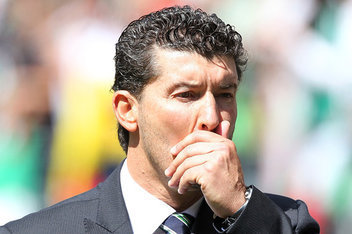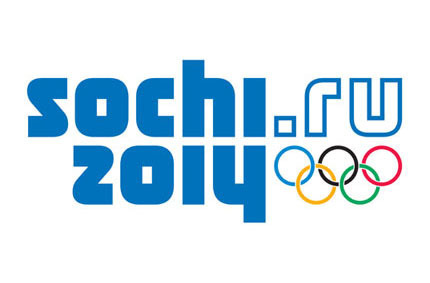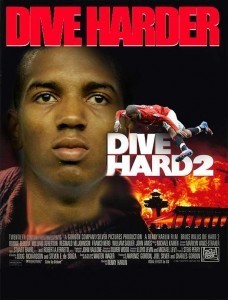Laurent Dubois's Blog, page 90
November 15, 2013
The Call Up: Old Ladies Club…No Longer
Every soccer girl dreams of getting a call up to the full women’s national team to play alongside legends Christie Rampone, Abby Wambach, Shannon Box, and Hope Solo. Now the opportunity seems not far out of reach for many rising college and NWSL stars. New women’s national team coach, Tom Sermanni, is giving younger players a chance.
Historically, the women’s national team has consisted of a core group of veteran players who have meshed together over the years into a team that some believe to be unbreakable. Their elite fitness, camaraderie, and veteran experience have established them as the best team in the world. Veterans cannot remain veterans forever though. Shannon Box, a three-time World Cup veteran and three-time Olympic gold medalist, is on maternity leave, but homes to return soon. Center back, Christie Rampone, is still with the squad after giving birth to three children. She has made 287 career appearances with the national team becoming the most active capped player in the world.
These two players are notably the glue that keeps this team together. But as their time remaining on this team begins to narrow, new players must start to make their way into the system to avoid lapses in certain positions.
The recent change in USA coaching staff has made for some angry fans that cannot quite understand a coach tampering with a veteran system. New players are constantly getting an opportunity in international friendlies and camps. Ten players have earned their first international cap this year under the new coach. Included in this list of ten are Amber Brooks (Bayern Munich FC- UNC), Morgan Brian (UVA), Crystal Dunn (UNC), Ashlyn Harris (UNC), Lindsey Horan (PSG France), Julie Johnston (Santa Clara), Kristie Mewis (Seattle Reign- Boston College), Christine Press (Tyreso Sweden), Leigh Ann Robinson (FC Kansas City), and Erika Tymrak (FC Kansas City- UF). All I have to say is: GOODBYE OLD LADIES CLUB.
Meet the future:
Coach Sermanii has put a silence to questioning fans about his latest decisions in an interview with Equalizer Soccer:
“We’ve got a very successful national team, and we’ve got very good players and a very strong squad,” Sermanni said. “So, I’m not in a situation where I’m coming into a job and saying, ‘I need to fill in players here; I need to find players.’ So, I’ve not actively gone out there and said, ‘I need to find players for this team.’
I have not heard many more squeals from those angry fans from earlier in the year. The so-called “tampering” Sermanni did with the squad has led the US Women’s National Team to an undefeated 2013 campaign (13-0-3). The biggest decision he will face will come as World Cup qualifying approaches. How much wiggle room will he have to bring younger and inexperienced players onto the 21-player roster? How much should Sermanni focus on building for the future?
November 14, 2013
The Future of Youth Sports in America
While this post is not about Soccer exactly, I think in light of today’s class discussions comparing youth (American) football to youth soccer in the US it is of interest:
Today a Think Progress article came out entitled “Enrollment in Youth Football down 10%”. The numbers given in the article show how youth football in America has been drastically declining since reaching a highest ever point in 2010, when over a quarter of a million young boys participating in the country’s largest youth organization, and over 3 million participating in total. Since then, these have continued to drop, and many involved do not see an upturn in sight.
What is the cause of this downturn? An HBO real sports article highlights that increased visibility and concern about concussions and their long term effects on players is to blame. 1 in 3 Americans surveyed said that the risk of concussions would make them less likely to let their son play football, and 1 in 5 said long term effects would be a “deciding factor” in allowing their child to play or not to play. While this is not the only thing to take into account in terms of football enrollment rates going down, it is clearly something that is in the forefront of most people’s minds, especially parents trying to decide if they want their children to participate or not.
What about concussions in soccer? While most consider concussion rates to be lower in soccer than in football, true statistics for concussions in any sport are hard to come by since most concussions go unreported – - a recent study found that less than 50% of high school athletes reported concussions they sustained during a single football season. In terms of soccer, it is believed to have concussion rates much higher than other sports, but still smaller than football. Interestingly, heading the football is not always the main cause. Most concussions sustained in soccer are due to running into other players, the ground, or the goalposts, and not the soccer ball itself. A recent book entitled “Is Soccer Bad for Children’s Heads: Summary of the IOM Workshop on Neuropsychological Consequences of Head Impact in Youth Soccer explores this very issue, and a sneak peak of the books chapters can be found here. While concussions do happen in soccer more than in other sports, the overall levels are still much lower than they are believed to be in American football, although again the lack of effective reporting and data is a concern for real comparison.
The bottom line with all of this is that, while concussions are much more prevalent than reported in both sports, the current debate is centered around American football, and it is within the youth leagues of that sport where we are beginning to see more and more concern from parents about whether or not football is safe for their children. The overall impact of such studies and debates is yet to be seen. Will this increase of information lead parents to encourage their children to play soccer instead of football? Or are they more likely to push their children into other more “American” sports? Going off of our conversation in class today, would such a grassroots shift away from football be enough to help create a sustainable soccer system here in the United States, or will more top-down institutional changes still have to be made? Could the risk of concussions lead the MLS to become the next NFL? Or will concussions become an issue in soccer just like they have become an issue in football? All this remains to be seen, but it does open the door for some interesting debates.
References:
Think Progress: http://thinkprogress.org/sports/2013/11/14/2940571/enrollment-youth-football-drops-10-percent/
HBO Real Sports: http://maristpoll.marist.edu/tag/hbo-real-sports/
Unreported Concussions: http://www.ncbi.nlm.nih.gov/pubmed/14712161
Is Soccer Bad for Children’s Heads: Summary of the IOM Workshop on Neuropsychological Consequences of Head Impact in Youth Soccer: http://www.nap.edu/openbook.php?record_id=10362&page=3
November 12, 2013
Battle of the Sexes

If you are looking for big news on American soccer, pay close attention to the summer of 2015. Very recently, it has been announced that Fox Sports has acquired the television rights to both the 2015 Women’s World Cup as well as the 2015 Men’s Gold Cup. Not only are these two tournaments during the same year, but they also take place during the same couple of weeks during the 2015 summer. Obviously, something has to give. Even though Fox Sports has multiple television stations, there’s no way that the company will be able to show both national teams with the same amount of coverage. One tournament has to receive the majority of Fox Sports’s time, dedication, and attention. Which event will take priority?
Clearly, the World Cup is on the biggest stage as it involves international times from every part of the world, while the Gold Cup only involves teams from North and Central America. However, another difference between the two events is the gender of the players involved. Unfortunately for women’s sports, they are usually less popular and favorable for fans to watch compared to men’s sports.
Although both the US men’s and women’s national teams have both gained popularity in the past decade, the men’s team has generally been more popular. This result exists despite the fact that the women’s team made it to the finals in the last World Cup while the men’s team has barely made it out of the group stages.
Despite recent trends in popularity and preference in games played by a particular gender, the US women’s national team, and women’s sports in general, could achieve a “victory” if they are given more airtime than the men’s national team during the next summer. In my opinion, this result should be extremely possible if not expected. The combination of the US women’s team being one of the best teams in the world, along with participating in dramatic/exciting games during the last World Cup (see video below). What also helps boost this possibility is the fact that the team has having some of the best players in the game like Abby Wambach, Alex Morgan, and Sydney Leurox, who also have some of the best personalities and fan relations. It will be really interesting to see which team will receive the most attention during the 2015 summer. My prediction: the US women’s national team will overtake the men’s national team in the news during the year 2015.
November 11, 2013
Sud-Coréenne joueuse de foot, Park Eun-Seon: accusée d’être un homme
En rapport avec notre discussion sur le football féminin sur la scène internationale, j’ai été choqué de découvrir une situation récente de la discrimination entre les sexes dans le football féminin. Je suis Sud-Coréenne moi-même, et j’avais honte de lire sur les dernières nouvelles au sujet de la Sud-Coréenne joueuse de foot et une attaquante forte pour Seoul City Amazones, Park Eun-Seon, et comment six équipes rivales dans la ligue de foot féminin de la Corée du Sud ont menacé de boycotter la nouvelle saison si Park ne passe pas un test de féminité.
Il est intéressé de noter que ces accusations ont apparu après le grand succès de Park Eun-Seon saison dernière, marquant 19 buts en 22 matchs alors que Seoul City a terminé deuxième. En fait, le manager du club, Seo Jung-ho, a lui défendu en disant que c’était un complot en raison de l’amélioration remarquable de Park après un creux de la vague au cours des dernières années. En outre, à la lumière de ces accusations, Park a reçu beaucoup de soutien dans sa défense.
L’Association Coréenne de Football a publié une déclaration expliquant que Park a passé un test de féminité quand elle avait 15 ans par l’Association Coréenne de Football en 2004, quand elle a été choisie pour l’équipe nationale Coréenne pour les Jeux Olympiques à Athènes. En plus, le secrétaire générale du Conseil sportif de Séoul, Kim Joon-Soo, a annoncé qu’ils n’ont pas l’intention d’accepter le test de féminité juste pour arrêter le boycott. Elle a déclaré, « C’est une violation grave des droits de l’homme qu’elle souffre pour une deuxième fois. La question concernant le sexe de Park ne doit jamais être soulevée à nouveau. La ville de Séoul prendra toutes les mesures nécessaires pour protéger les droits de l’homme de notre joueuse. » Même le maire de Séoul, Park Won-Soon, a twitté : « Comme le père d’une fille, je ferai de mon mieux pour protéger les droits de l’homme de Park Eun-Seon. »
Park Eun-Seon elle-même a répondu et a partagé ses sentiments sur le scandale sur sa page Facebook. Elle a écrit :
« Mon cœur se languit et c’est humiliant. Je suis passé déjà des tests de féminités plusieurs fois et j’ai participé à la Coupe de Monde et les Jeux Olympiques. Je sais que ces gens essaient de me détruire… Avant, j’aurais jeté mes mains et quitté, mais j’ai travaillé très dur pour arriver à ce point, et je ne vais pas abandonner facilement. »
Lorsque les entraîneurs de ces six équipes s’ont rendu compte que leurs actions ont provoqué un réaction négative du public, ils reculèrent en disant qu’ils voulaient juste savoir comment un bon joueuse comme Park n’a pas joué en équipe national depuis dans les dernières années. Pourtant, cette excuse peu convaincante a été encore plus honteuse que leurs accusations initiales.
Malheureusement, ce n’est pas la première fois dans les sports où l’accusation de sexe s’est produite. Par exemple, en 2009, des accusations apparaissent questionnement le sexe de Caster Semenya, une athlète Olympique d’athlétisme. En outre, ce scandale semble refléter le caractère trop compétitif de la société Coréenne, où les gens sont déterminés à gagner par tous les moyens.
Un côté positif de cette situation est peut-être que Park a reçu une quantité énorme de soutien des fans et qu’elle jure de se remettre de ce scandale en s’entraînant plus et en obtenant de meilleurs résultats.
Sources:
http://www.bbc.co.uk/sport/0/football/24864223
http://www.cnn.com/2013/11/08/sport/football/south-korea-gender-boycott-football/
http://koreatimes.co.kr/www/news/opinon/2013/11/137_145899.html
Why is Mexico so bad at soccer?
Mexico is a country of 119 million people, and has the world’s 11th largest economy. It has more people than Germany, the Netherlands, The United Kingdom, France, Uruguay, Argentina, Spain, or Colombia. It is also soccer crazy- no sport even comes to matching the support El Tri gets in Mexico. Why then, did it take a goal by Graham Zusi, a member of the Unites State’s B team, for Mexico to even get a chance to qualify for the 2014 World Cup? Essentially, Why is Mexico so bad that it squeaked past the Hex (CONCACAF’s world cup qualifying rounds) only because another team determined it’s fate?

There was once a time when Bruce Arena, the US Men’s national coach, would only host games against Mexico in Columbus, Ohio, so that the stadium would not be filled with people waving the Mexican flag, which was a problem in places like Los Angeles, Miami, and New York. Since then, the US team has not only caught up to Mexico, but the Americans are probably now better than Mexico. The reasons for this are many, but there are three groups on whose shoulders blame can be placed-the coaches, the players, and Liga MX, the Mexican league
The Players
The current group of Mexican players, while certainly very technically talented, rate among the worst in terms of discipline and team cohesion. The team has players like Carlos Vela, Chicarito, Giovanni Dos Santos, Rafael Márquez, Guillermo Ochoa, and Héctor Herrera- a very talented group of players who play in some of the top leagues and clubs of the world. Yet, many have been accused of being lazy and having no discipline. This blew up spectacularly in 2010, when after a win against Colombia, Vela and Efrain Juarez held a party. For violating team rules, they were fined and banned, along with some of the other more high profile players on the team. Since then Vela, one of country’s best players has refused to play for El Tri.

Vela Refused to play after the hotel scandal of 2011
A year later in 2011, 8 players (including Jonathan dos Santos, one of the brightest prospects on the team), were banned for bringing prostitutes back to their hotel rooms. While this behavior is unsurprising in sports starts, it has proved to be a bad distraction from football.
The Coaches
Saying the name “Chepo” to a Mexican soccer fan usually results in a flurry of insults and curses. “Chepo” refers to José Manuel de la Torre, a former player who managed Mexico from 2011-2013. By all accounts, Chepo has been the worst coach in the history of the Mexican federation. Chepo was particularly inept with the press, which is dangerous in a football mad country like Mexico. He often stuck his foot in his mouth, once saying that the team was “doing well” after a loss to Honduras.

Chepo was often Confused
But this would have forgiven if the man had produced results. Alas, he did not. Chepo had little time for tactics, and teams often exploited his naivety. For instance, Jamaica was known to use Chepo’s team selections to always attack down the right flank of the team- a flaw that the manager never fixed. He was also terrible at player management- he alienated Vela, rowed with both the dos Santos brothers, and was not on good terms with Rafa Marquez. The man also blamed all defeats on the players, so was not popular in the dressing room. New management (Chepo was fired in 2013) should improve on his performance.
Liga MX
While players and coaching can easily be replaced and improve, an underlying problem is Mexico’s Liga MX. The vast majority of the National team’s players earn their wages here, but the league is corrupt and focused on profit maximization, not player development.
Liag MX has often been accused of being full of players from South America who couldn’t make it to Europe. As a consequence, youth development is ignored, which has resulted in El Tri suffering. The best players on the current team mostly grew up in Europe or moved there at an early age. Young players who aren’t stars don’t have much of a chance to shine or grow, as their spots are taken by older, more experienced players.
But an even more serious problem may be El Pacto de Caballeros, or the pact of Gentlemen. This pact is an agreement by the owners of the clubs in Liga MX to essentially protect their own interests with regards to player contracts. If a player runs down his contract, only his original team is allowed to sign him. Thus, Liga MX has no free agency, as players are forced to sign with their original teams. This decrees the flow of players, and also hinders development.
These reasons don’t alone explain why Mexico constantly underperforms. But remedying these glaring issues will undoubtedly result in a better national team.
Censorship in Sochi
We have been talking a lot in class about the questionable decisions for the World Cup to be in Brazil in 2014 and Qatar in 2022 based on current conditions, but today we found out that officials at the Sochi Olympics will not allow photos and documentation to be shown to the public via many social media avenues and that other reporting will be highly monitored. According to the Huffington Post:
“Tweeting,” “Instagramming,” “Vining” and any other use of pictures taken with a phone, tablet or pocket camera are reportedly banned from the 2014 Winter Olympic Games, and any print journalist who violates this rule will be removed from the events immediately.
A recent Buzzfeed update says that the IOC says otherwise, and that social media usage during the 2014 Winter Games is actually encouraged, but we will have to wait and see what the future brings to see how social media will, or will not, be used. This is interesting as we have been discussing a lot the importance of social media and blogging in global events and how it gets more and more important each year. Even in this class, we are using a blog to get our ideas out to the rest of the world almost instantaneously and it seems that each major global event goes hand in hand with “‘Tweeting’, ‘Instagramming’, and ‘Vining.’”
Relating this to the World Cup in Brazil in 2014, social media and blogging has been and will be used in a variety of ways. Protests have gone viral about the spending of taxpayer dollars, David Goldblatt came in to class last week and showed us the importance of street art in Rio de Janeiro, and social media constantly helps the best goals and moments spread around the world almost immediately. Overall, it contributes to the fantastic globalization of soccer that makes the World Cup the most-watched event in the world.
In our world of social media, what do you think is going to happen? What would a global event like the 2014 Winter Olympics be like without social media? Will this be a precedent for the World Cup in 2018 in Russia?
The Christmas Truce match in 1914
In catching up on some online reading about the 2014 World Cup in Brazil, I stumbled upon an article in The Guardian about Britain’s plans to commemorate World War I. These plans include nothing other than…a reenactment of a football match that was played between British and German troops on a Belgian battlefield during the Christmas Truce of 1914. On Christmas Eve and Christmas Day 1914, only five months into the outbreak of the war in Europe, many British and German troops along the Western Front set down their weapons and came together between the trenches to celebrate the holidays and offer gestures of goodwill, according to history.com. The soldiers “exchanged presents of cigarettes and plum puddings and sang carols and songs,” and “there was even a documented case of soldiers from opposing sides playing a good-natured game of soccer.” Although the soldiers played on opposing sides, the friendly match showed good-spirited competition transcending enemy lines. The soldiers’ humanity was expressed through sport.
This snapshot of football in history exemplifies World Cup founder Jules Rimet’s vision for soccer as a way to resolve international conflict without the use of violence. When Rimet, assumed the role of president of the Fédération International de Football Association in 1920, he spoke of his hopes that soccer would redirect conflict in the modern world “towards peaceful contests in the stadium, where foundational violence is submitted to discipline and the rules of the game, loyal and wise, and where the benefits of victory are limited to the wild joy of winning” (Dubois, 28). The Christmas Truce soccer match was a merely a casual kickabout, but taken in the context of WWI, it supports Rimet’s belief in the power of soccer to bring seemingly disparate people together in peaceful competition.
Andrew Murrison, the minister in charge of overseeing the WWI commemorations, expressed this sentiment when he told The Guardian that although the football match had no relevance to the outcome of the war, it is something that people “latch on to” at a “deeply, intensely personal level.” Additionally, history.com described the Christmas Truce festivities as “one of the last examples of the outdated notion of chivalry between enemies in warfare,” adding that “it was never repeated.” Soccer may just be a game, but that’s only the tip of the iceberg. Spontaneous matches like the Christmas Truce highlight some of the best parts of human nature—sportsmanship, discipline, teamwork, a competitive yet friendly spirit, and the human impulse to joyfully celebrate victory.
Works Cited
Dubois, Laurent. Soccer Empire: The World Cup and the Future of France. Berkeley: University of California Press, 2010. Print.
November 10, 2013
United States Businessmen Taking Over the Premier League
This past week, David Goldblatt visited our class to explain his accounts of world football. One interesting comment he made was describing the English Premier league as a business to be completely hopeless. This past summer, Shahid Khan, a US billionaire car parts baron, bought Fulham football club for an estimated $300 million.

Shahid Khan with a personalized Fulham jersey after purchasing the London club this past summer
This purchase made him one of six American businessmen to be owning a Premier League team, including the Glazer family at Manchester United, John Henry at Liverpool, Randy Lerner at Aston Villa, Ellis Short at Sunderland, and Stan Kroenke at Arsenal. These six make up almost a third of the entire Premier League, a number much higher than the American representation in any other aspect of the league.
So what exactly is bringing these American investors to the Premier League? Most of the owners claim that they are avid fans of the club and want to be a part of the rich history that the club entails. However, more practical reasons underlie why they fork over several hundred million dollars for these clubs. Shahid Khan said that, “the Premier League obviously has a huge global audience… It’s got a great media deal, it’s got great leadership at the top and most importantly a very, very passionate fan base and it’s an excellent business platform.”
TV deals are a large factor when it comes to earning profits. According to the Tribune, the 20 clubs will split around $2.6 billion in new broadcast deals this season. John Henry, the Liverpool and Boston Red Sox majority owner, interestingly told The Guardian that he bought the famous soccer club without ever really knowing anything about the game. They understood the business behind it, recognizing the enticing profits made through these television deals. In addition, these clubs come at a fraction of the price to other American sports franchises. Because the Premier League is run in a way of possible relegations, large swings in income can occur if ones team does poorly and is relegated. Therefore, these teams offer a higher risk and are sold at cheaper prices than in closed leagues.
Furthermore, the globalization of soccer, more specifically the Premier League, has offered these businessmen a way to globalize their brand. Shahid Khan is the current owner of the NFL franchise the Jacksonville Jaguars and has vowed to bring his team to London for a game in each of the next four seasons. Additionally, most of the owners also own American sports franchises like the Jaguars or the Boston Red Sox. These offer them a platform to gain more fans in America for their English teams. The purchase of an English Premier League teams offers these Americans another outlet to spread their brand all over the world.
This influx in American owners also underlies the growing popularity of soccer in the United States. An estimated over 24 million Americans are currently playing soccer with another millions and millions watching it every year. NBC is continuing the trend by paying an estimated $250 million for the rights to air Premier League games in the US. With the growth of the MLS as a competitively recognized league by the world, soccer interest in the US is becoming more common, and the influx of American owners in the Premier League is another big step.
These owners also seem to be helping the Premier League teams financially by running tighter budgets. By owning American sports teams, they are often accustomed to limits imposed by the league to limit their spending including salary caps and luxury taxes. The European governing body of soccer, UEFA, is encouraging teams to have more sustainable budgets, after years of Russian and Arab owners spending millions and millions of dollars for their respective clubs, most notably Roman Abromavich at Chelsea. American businessman, Stan Kroenke, however, has invested in a business model that brings in over a $20 million operating budget annually, by being frugal with his spending.
With the popularity of soccer growing in the US and the popularity of owning soccer teams growing among rich investors, Americans could become a larger majority of not only the Premier League, but other popular leagues around the world, like the Bundesliga or La Liga.
References:
1) http://www.theguardian.com/football/b...
2) http://www.mirror.co.uk/sport/footbal...
3) http://tribune.com.pk/story/590590/us...
4) http://www.thedailybeast.com/articles...
5) http://bleacherreport.com/articles/17...
November 8, 2013
Where’s our La Masia?
A recent article in the The New York Times about “an American boy wonder in Barcelona” caught my eye this morning. The wonder boy is Ben Lederman, age 13. The Lederman family packed up everything and left their lives, family, and friends in California to move to Barcelona in 2011 when Ben (who was then 11 years old) was invited to train at La Masia, the famed youth academy run by the global soccer juggernaut FC Barcelona, what many would say is the best football club the world has ever seen.
Ben is the first United States-born player invited to train at La Masia, and that distinction, while significant, means little to his overall quest: to work his way up through the Barcelona youth teams and someday, maybe, become the first American to play for Barcelona’s first team.
[image error]
After reading the article, I thought back to a 60 Minutes episode that I watched this summer on CBS – The Super Cartel, Sticker Shock, Barça (while the entire episode is very interesting the part pertaining to this post is clearly the last segment on Barça). In this episode, Bob Simon profiles the Catalonian football club and the training system it built that produces such gifted players that nearly 70% of the current team is manned by its graduates. So it makes sense then why the Lederman family decided to make the life-altering decision to move to Barcelona and give Ben the opportunity of a lifetime. Parents want what’s best for their children, and La Masia is the best.
It is safe to say then that youth development is a, if not the, key factor to Barça’s success. Perhaps this is something the United States can learn from as we continue in our struggle to build a truly successful soccer league.
A fellow classmate of mine (Bryan Silverman) wrote a blog post earlier this semester, “U.S. Youth Soccer vs. Soccer Fandom in the U.S.,” in which he pointed out that
the United States has the highest participation of youth playing soccer in the world, with almost 4 million American children registered with US Youth Soccer.Furthermore, the United States saw the most accelerated growth rate of high school soccer between 1990 and 2010 than it had ever seen before.
So the desire of the youth to play the beautiful game clearly exists in the US, and we obviously have the talent (cough, cough… Ben Lederman). However, most soccer youth academies in the US are simply an extracurricular outlet. Until recent times, the US had nothing like La Masia to nurture our most talented young soccer players, but the MLS has recently launched 19 of its own soccer academies in cities across North America — and they’re modeled on European soccer academies like La Masia. Granted, it takes many years to create the sort of environment, ethos, and reputation that La Masia provides – the program did not just form overnight. La Masia also has the cultural association of being Catalonian – a truly unifying identity, something that, as Barça’s President Sandro Rosell says, is “in their blood.”
Many of you reading this are probably thinking that the only reason kids like Ben Lederman go to La Masia is for the hopes of playing for Barça one day. So even if an “American” La Masia was established , which team would those players hope to play for one day? There is no “American” Barça. La Masia is only great because Barça is great.
It’s the classic “which came first: the chicken or the egg” question. Which needs to come first: the youth development program or the team? I myself am not sure of the answer in general. But I would say that for Barça specifically, it was the youth program. However if you consider other successful teams around the world, that’s not necessarily the case. Many other clubs owe their success primarily to transfers (and yes, I’m aware that Barça does get some incredible players via transfers, but that makes up a minority of their team).
Whether or not the United States is capable of creating teams that rival Barça is not certain, but I do believe that, given the increasing interest and participation of our youth, part of the answer lies within our youth development programs. We are a country that constantly emphasizes the importance of our youth and the fact that they are the hope of our future. In education and the workforce, we strive to give the American youth all the best opportunities. Therefore, the same can be applied to the soccer arena. Perhaps then, families like the Ledermans won’t feel the need to sacrifice a life in the US and move halfway across the world in order to provide “the best” for their children.
November 7, 2013
Diving in Soccer
This is one of many posters denouncing that terrible act that is too often encountered in football, diving. Here, Ashley Young, a player for Manchester United is shown in a parody of Bruce Willis’s Die Hard in Dive Hard 2. Iain Mcintosh of ESPN Soccernet addressed the prevalence of diving in soccer today with this great . After the Real Sociedad versus Manchester United Match, Young’s recent antics brought diving right back to the forefront of discussion. Even after Sir Alex Ferguson and current United manager David Moyes have urged Young to not rely on these dirty tactics, he continues to be in the news for the wrong reasons since his transfer to United from Aston Villa.
In the English Premier League, Young is not the only prominent player to be accused of diving. The great Luis Suarez, an absolute magician who can conjure goals out of nothing for Liverpool, has been under fire for his dives. Compared to Young though, he is an absolutely brilliant actor. In fact, if there was an oscar awarded in football for diving, Suarez would be up there with the likes of Barcelona’s Sergio Busquets and Real Madrid’s Cristiano Ronaldo for performances like these.
While these acts happen, people point to better refereeing to remedy the situation, but it is not as simple of a fix as one would assume possible. Unfortunately, in these situations, the referee is put into a tight bind. Since player safety is always the utmost priority on their part, how can referees eliminate instances of obvious cheating? Macintosh suggests that to remove diving from the game we can completely eliminate it by playing the advantage in these situations as the most extreme solution. Interestingly, he also proposes the use of a panel to determine how to dole out retrospective punishment for these major offenses that can easily dictate the outcome of crucial matches from the Champions League to the World Cup stage. This panel would be well suited to asses the complaints made by teams to ensure that these incidents do not happen. By ignoring the situation, we only exacerbate the problem by permitting these acts to continue to occur. Players must realize that there are repercussions for their actions that often go unobserved because they occur in small instances over the course of matches. By having an committee in place overseeing these issues, soccer can once again be played like it was supposed to be as the beautiful game.
What do you all think about the best ways to tackle the complex issue of diving? I would love to hear your thoughts.
Laurent Dubois's Blog
- Laurent Dubois's profile
- 44 followers








